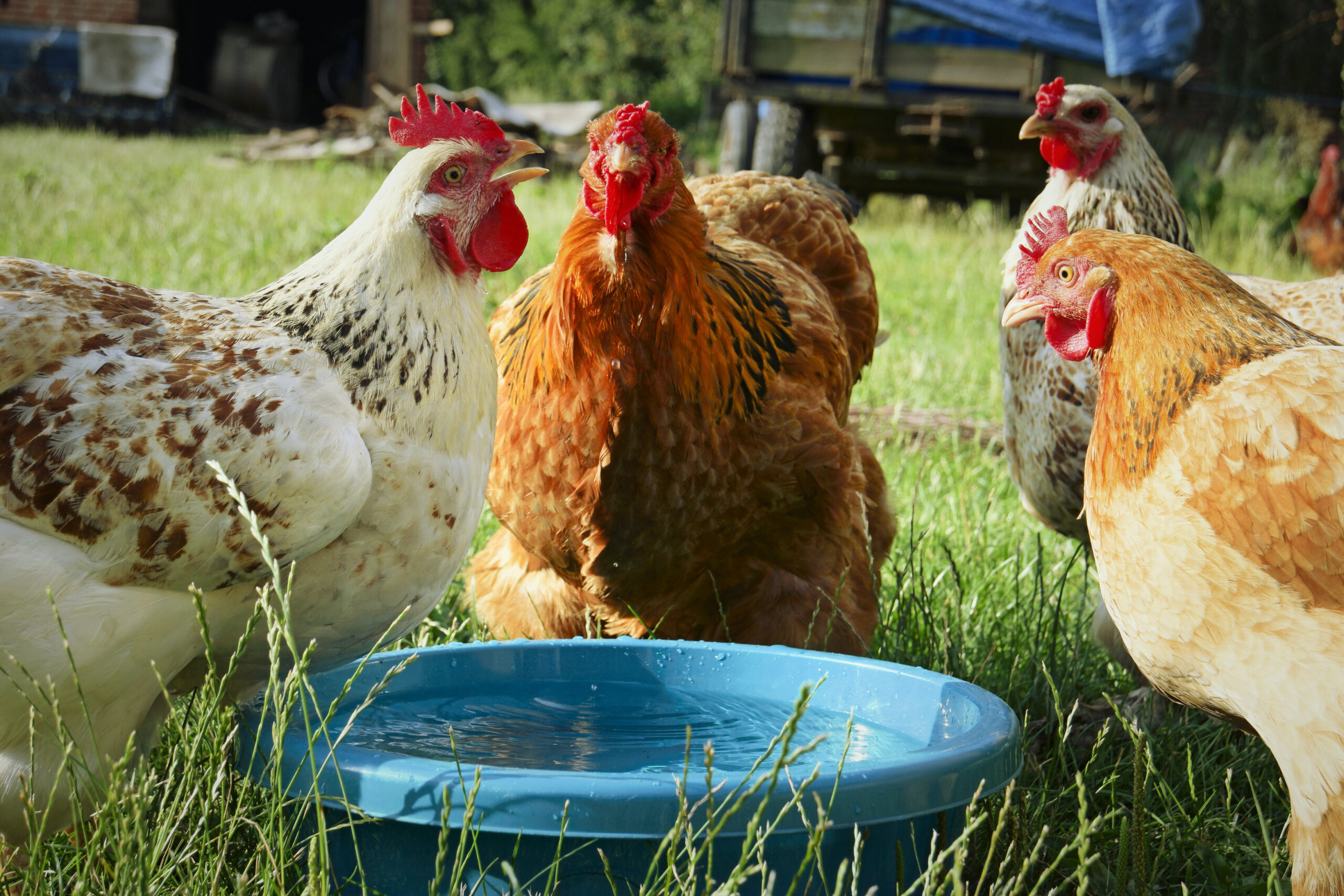Written by: Bria Osborne, OVC 2026
Edited by: Dr. Paisley Canning
Why is heat stress a concern?
When the temperature outside rises, so does a chicken’s internal temperature. When a chicken gets too hot, their internal enzymes become unstable and cannot function. When the enzymes lose their function, the chicken dies. The temperature at which a chicken’s enzymes become unstable is not much higher than their normal functioning body temperature, so keeping your chicken cool is a must.
When should I be concerned about heat stress?
The critical air temperature for chickens is 35 degrees Celsius. However, humidity greatly affects how much heat your chicken can withstand comfortably. For instance, 28 degrees Celsius with 65 percent humidity can be just as uncomfortable for your chicken as 35 degrees Celsius.
Below (figure 1), is a chart used to calculate your chicken’s risk of getting heat stress.
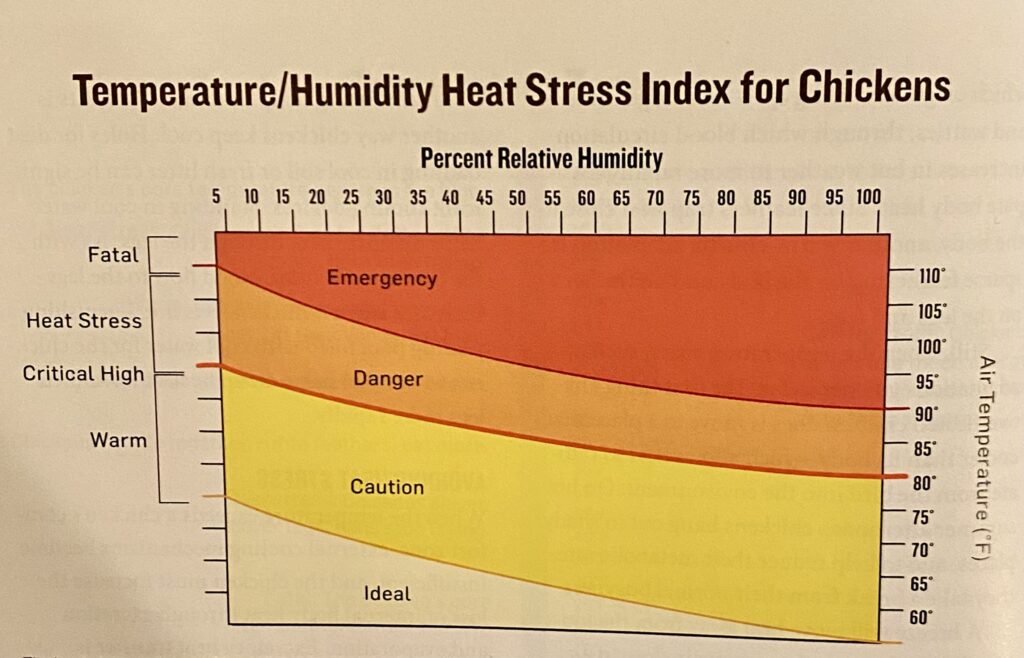
Photo credit: The Chicken Health Handbook
Figure 1: Above is a chart used to calculate your chicken’s risk of getting heat stress. The chart takes into account the percent relative humidity (of the chicken’s environment) and the air temperature (of the chicken’s environment). To calculate your chicken’s risk, draw a line down from the percent relative humidity and a line across from the air temperature. Where the lines cross is the zone of risk associated with heat stress.
Signs of heat stress
When chickens are dealing with increased temperatures, they employ multiple different techniques to decrease their temperature.
Some signs of heat stress in your flock may include:
- Chickens start panting (figure 2)
- Standing with wings away from the body (figure 2)
- Limiting activity
- Reduction in feed intake
- Reduced egg production
- Reduced egg weight
- Thin eggshells
- Increased water intake that results in wet manure and soiled eggs
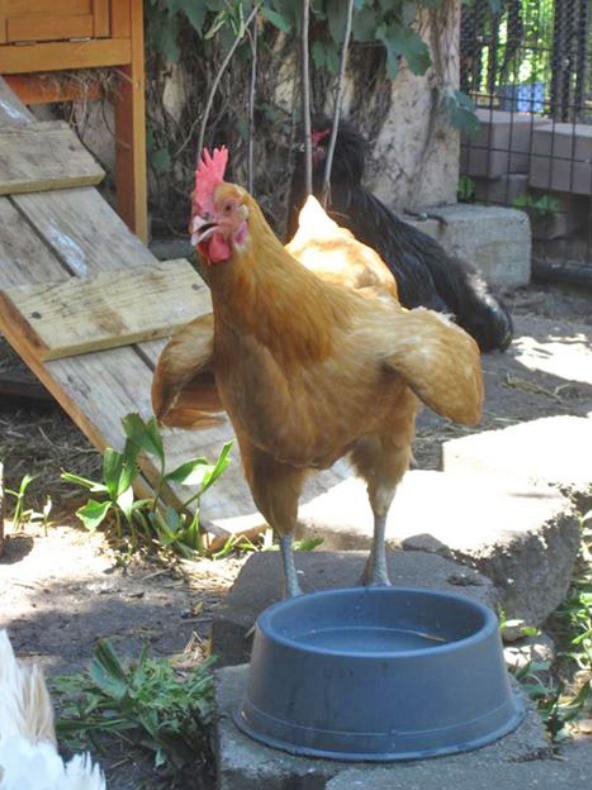
Photo Credit: Sweetlix
Figure 2: Chicken panting with wings raised. These are two signs of heat stress.
Heat stress prevention
Heat stress facilitates impaired immune function, which opens the door for infections, as well as being fatal all on its own. Chickens lack sweat glands; therefore, integrating heat stress prevention is an important aspect of poultry health and comfort.
The following are some tips and tricks for reducing heat stress in your flock:
- Avoid overcrowding, allow birds enough space to spread out and minimize stress
- Make sure the coop is well ventilated
- If chickens are let outside, make sure they have a shady spot to get out of the sun
- Make use of sprinklers
- Provide a shallow pool of water for the chickens to stand in (figure 4)
- Provide fresh, clean, cool water
- If a waterline system is used, you can flush the line during warm periods to allow for cool water to enter the line.
- Add a fan to the coop and hang frozen water bottles in front for added coop cooling (figure 3)
- Talk to your vet about adding multivitamins to the water before a big heat event.
- Feed during the coolest time of the day to help minimize stress
- Do not disturb the birds, especially during the hottest part of the day
- Provide a dust area in the shade
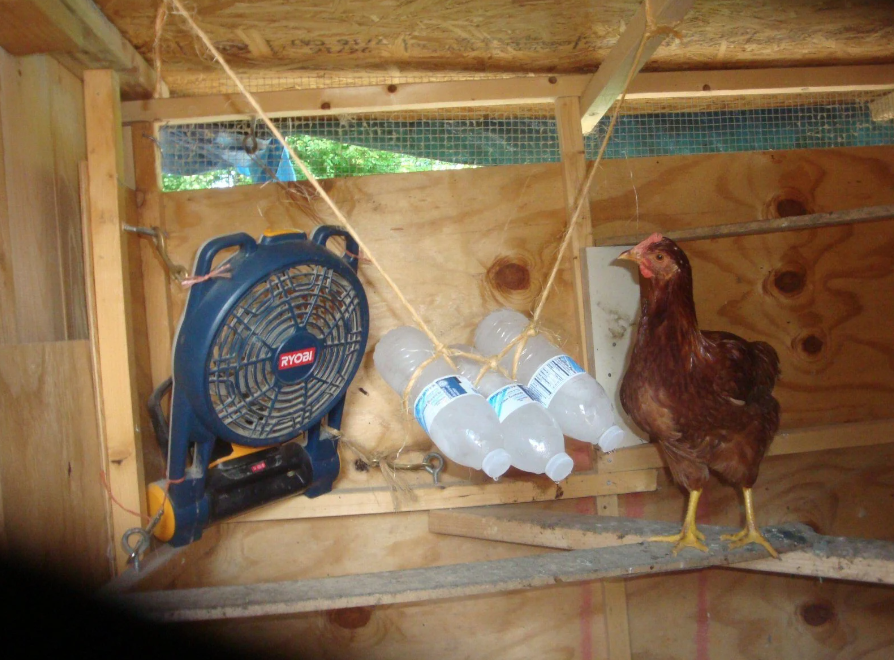
Photo Credit: Backyardchickens.com
Figure 3: Putting a fan in the chicken coop with frozen water bottles in front is a good cooling technique for coops.
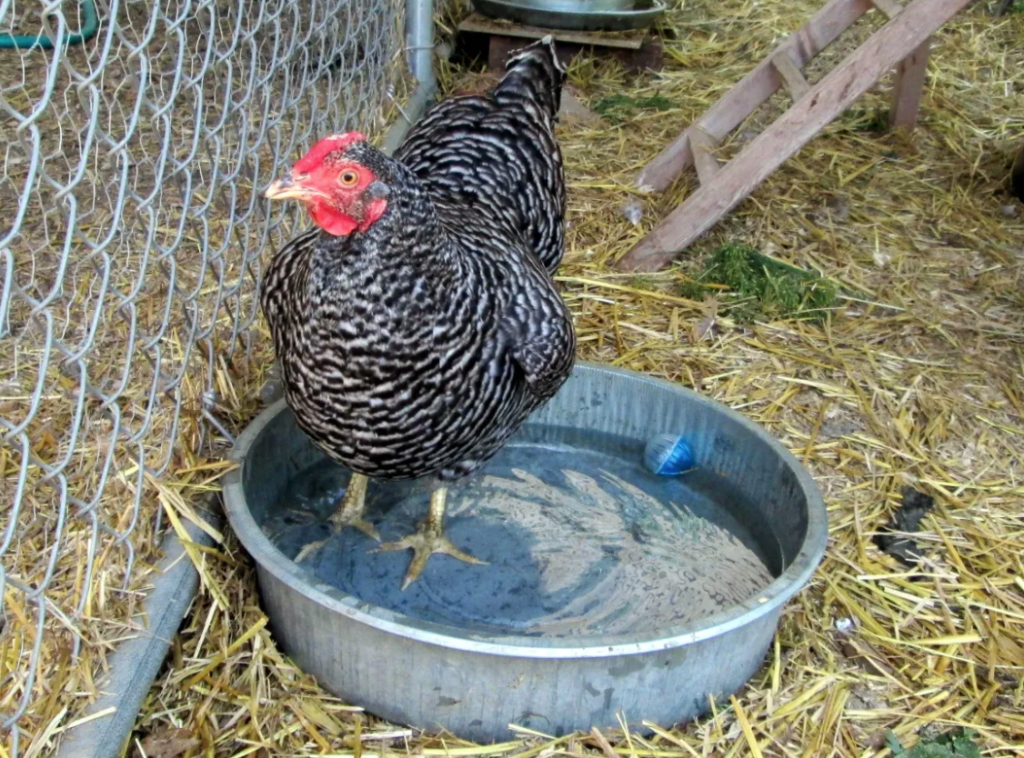
Figure 4: Providing a shallow pool or pan filled with water is a good way to provide cooling to your chickens.
Help keep your chickens cool and comfortable this summer and reach out to Dr. Canning if you have any questions regarding heat stress and your chickens. You can contact the clinic at [email protected], or on facebook.com/upperthamesvs.
References:
The chicken chick: https://the-chicken-chick.com/
The chicken health handbook by Gail Damerow
WeCAHN and CAHSS small flock poultry course

